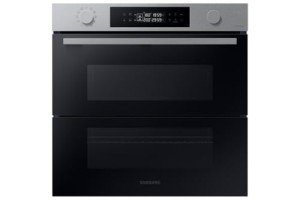The Benefits and Design Considerations of a Kitchen with a Built-In Oven
In contemporary kitchen style, built-in ovens have actually become a prominent feature, offering both functionality and aesthetics that accommodate contemporary lifestyles. This post looks into the advantages of incorporating a built-in oven into the kitchen space and highlights vital design considerations to guarantee a cohesive and useful kitchen environment.
Comprehending Built-In Ovens
Built-in ovens are created to be seamlessly integrated into kitchen cabinetry, which distinguishes them from conventional freestanding ovens. These appliances come in various configurations, including single-wall ovens, double-wall ovens, and even microwave ovens that share the exact same integrated cabinet space.
Typical Types of Built-In Ovens
| Type | Description | Perfect Use |
|---|---|---|
| Single Wall Oven | A basic oven with one compartment for baking and roasting. | Small cooking areas or everyday baking. |
| Double Wall Oven | 2 separate oven compartments permitting synchronised cooking. | Large households or frequent bakers. |
| Combination Oven | A microwave and traditional oven in one system. | Quick meals and flexible cooking choices. |
| Steam Oven | An oven created particularly for steam cooking. | Health-focused cooking and elaborate recipes. |
Advantages of Built-In Ovens
The appeal of built-in ovens can be credited to a number of crucial benefits, including:
1. Space Efficiency
Built-in ovens are developed to fit within existing cabinets, maximizing important floor space. This function is especially beneficial in smaller sized kitchen areas, where every square foot counts.
2. Streamlined Appearance
The smooth integration of a built-in oven produces a polished appearance in the kitchen. Offered in different finishes, built-in ovens can match or complement cabinets, providing a contemporary and unified design visual.
3. Improved Functionality
Built-in ovens frequently offer innovative features, such as wise technology, multiple cooking modes, and even self-cleaning options. This can boost cooking experiences and improve the efficiency of meal preparation.
4. Enhanced Accessibility
With proper installation of a built-in oven, users can increase ease of access, avoiding the need to flex over to reach a lower oven compartment. Eye-level cooking appliances enable cooks to monitor their meals quickly and decrease the risk of burns from bending down to examine a baking item.
5. Energy Efficiency
Numerous modern-day built-in ovens use sophisticated cooking innovation that can lead to lower energy intake. Features like convection cooking can decrease cooking times while ensuring even heating, ultimately conserving energy.
Design Considerations for a Kitchen with Built-In Ovens
While built-in ovens offer many advantages, mindful factor to consider in the design phase is vital to optimize their benefits and integrate them successfully into the kitchen layout. Here are some crucial factors to consider:
1. Cabinet Configuration
When planning for a built-in oven, homeowners should carefully think about cabinet designs and configurations. Appropriate ventilation is critical for proper operation. It's important to leave enough area for airflow, which can vary depending upon the oven design.
2. Height Preference
The installation height of the oven must be determined based upon the main users. ovensandhobs.uk built-in oven located at eye level can make it easier to utilize, specifically for those who regularly cook.
3. Complementary Appliances
In a kitchen setting, built-in ovens often match other built-in appliances such as microwave and warming drawers. Selecting appliances that work well together can even more improve the kitchen's design.
4. Visual Choices
Choosing finishes and colors that harmonize with the total kitchen style is important. Built-in ovens are available in various options, consisting of stainless steel, black, and even custom-made cabinet ends up that can disappear perfectly into the cabinetry.
5. Budget Considerations
Built-in ovens can range substantially in price, from affordable alternatives to high-end designs filled with features. It's important to set a practical spending plan that enables the wanted requirements without compromising the general kitchen renovation.
Frequently asked questions
1. What is the difference in between a built-in oven and a freestanding oven?
Built-in ovens are integrated into cabinetry and supply a seamless look, while freestanding ovens are standalone systems that can be moved easily.
2. Do built-in ovens need professional installation?
Yes, built-in ovens usually need expert setup due to their integration with cabinetry and electrical requirements.
3. Are built-in ovens more costly than conventional ovens?
In basic, built-in ovens can be more pricey due to their setup process and advanced features, however there are numerous alternatives readily available to match varying budget plans.
4. How do I preserve a built-in oven?
Routine cleaning and upkeep, such as using the self-clean function, examining seals, and ensuring correct ventilation, are essential for preserving a built-in oven.
5. Can built-in ovens be utilized in smaller kitchens?
Yes, built-in ovens can be helpful in smaller sized cooking areas because they optimize space effectiveness and can be set up at eye level for benefit.
Incorporating a built-in oven into a kitchen design is an exceptional choice for boosting performance and looks. By thinking about the style suggestions and benefits talked about in this short article, house owners can produce a harmonious kitchen space that accommodates their cooking requirements while looking trendy and elegant. Whether refurbishing an existing kitchen or designing a new one, built-in ovens supply a level of sophistication and practicality that lines up flawlessly with contemporary culinary practices.

